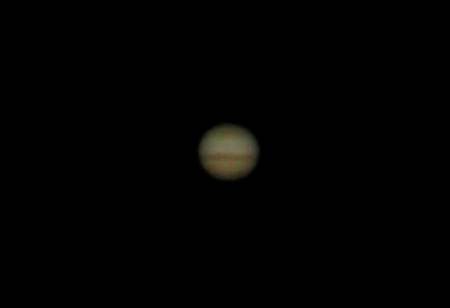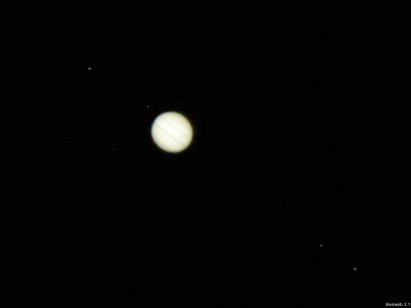The other night, while the sun was crossing the celestial equator on its annual journey southward and I was busy snapping pictures of the harvest moon, another bright object near the moon caught my eye. (That’s right, if you want to distract me, show me shiny objects.) I pointed my little 60mm spotting scope and point-and-shoot digital camera at it, and, by Jove, it turned out to be Jupiter!
The image above isn’t all that spectacular, but it’s pretty special to me. I mean, I hadn’t planned on taking pictures of Jupiter at all, and you can actually see the North Equatorial Belt (south is up in the image) and other markings on the planet. All this with a tiny little scope, a snapshot camera, and about 5 seconds of planning! In the days of film cameras, a result this “good” would have been the product of a lot more planning, and a lot more time spent either developing the film in your own darkroom or waiting for the prints or slides from the photo lab, hoping against hope that they wouldn’t throw the image out as “unusable.”
My, times have changed.
Times have changed on Jupiter as well. Had this been a photo from the good old days, Jupiter would have looked different: as you can see in the image above, and much better in the images accompanying this article, there would have been two prominent equatorial belts, while there is only one here. I even have a record of the pre-disappearing SEB myself:
If I can ever get time to haul out my “big” scope (8 inch SCT), maybe I can use my webcam and get some decent images…
Still, it’s amazing what you can see from your own backyard with the simplest equipment.




That is a super-cool photo! I would be ecstatic if I caught that on film. I think I’ll have to give it a shot.